Introduction
The success of any business is often attributed to its leadership style. This is because when the management or the leaders are able to make sound decisions, institute effective policies and develop good communication in their companies, then these companies are bound to have better success. However, because business leaders come from different backgrounds, such as in terms of their ethnicity, religion, nationality and language, leadership styles vary a across the globe. The United Arab Emirates has a unique blend of these factors and this prompted to take a keen look and the leadership style of this country. The Emirati people have a unique culture; they have strong religious affiliations often exercised even at the workplace and mostly, they speak the Arab a language, something that is not very common in the west. Even though English is a de facto language in business, there has not been much transfer of the western culture to the UAE. With increasing interest in UAE as a centre for business in the East (Middle and Far East), it is required to understand how the contracting industry, (and more so the construction companies) is managed since the companies in this sector seem to have attained the most success as far as industry growth in the region is concerned.
Leadership and intercultural competence are very essential elements of business success in the modern world. It is for this reason that leaders must be very sensitive to the conditions facing their organizations and the characteristics of their employees. This is especially the case for those leaders leading organizations in a multicultural society. The issue of effective leadership in the UAE contracting companies is addressed in detail in this research.
The question of intercultural leadership in this research is investigated through the use of detailed qualitative interviews with participants who understand the concept of leadership in the UAE’s contracting industry. The Emirati individuals who work as leaders in different contracting companies usually exercise their leadership styles based on the Emirati culture.
Rationale for The Research
The UAE has become a very important business and commercial hub, hosting a number of businesses. The country has also become a very important player in wealth creation and asset development (Fleming, 2004). The construction industry has been very active in the UAE in recent years, and for this reason, there is need for the recognition and deeper understanding of its operation and in particular, its leadership (Dubai Government, 2011, p 5-6). This is because the way business is conducted in the Arab culture is such that ethics and morals are more important than professionalism. The role of leadership in the contracting industry in the UAE is very essential for the development and success of the industry and the entire country at large.
In general, leadership of the country has often been spoken of by world business leaders and many people believe that the ruler of Dubai, Sheikh Mohammed, had a very prospective vision of transforming the country into a well-respected venue for multinational trade activities and consequently, he is now today popularly referred to as the emblematic fundamental leader (Dubai Government, 2011, p 5-6). This is because he inspired and encouraged investment and the pursuance of innovative and current technologies.
The success of the contracting industry in the UAE depends on leadership and strategies of investment; therefore, this study is very appropriate in informing the industry players (Faridi & El-Sayegh, 2006; Matly and Dillon, 2007). Dubai has grown to become a multicultural city with many nationalities getting in for business and this fact was crucial for leaders who had often based their leadership styles on the local culture.
Aims and Objectives
Aims
The main aim of this research is to investigate some of the leadership styles of the leaders in the construction companies in the UAE.
The Objectives
The main objectives of this research are;
- To investigate some leadership styles of leaders in the UAE contracting industry.
- To test the potential, efficiency and reliability of the current framework of leadership in the contracting industry.
- To understand the impact of existing culture and local religion on leadership of the UAE contracting industry.
The study has a broad objective of establishing the level or degree to which the construction companies in the UAE were affected by leadership styles (Toor & Ofori, 2008). An understanding the impact of leadership on the success of these construction projects as perceived by the industry players is also essential for achievement of this objective.
Hypothesis
Construction firms in the UAE are efficient and successful because of the efficient and reliable leadership in the contracting industry.
Research Methodology
This research uses both primary and secondary data. Secondary research involved a review of the literature on the leadership styles often applied by leaders in the UAE. There is also an investigation of leadership theories as they apply to the leadership styles of the leaders in the UAE’s contracting industry. To supplement the secondary research, this research also made use of primary data that entailed conducting a survey (Cooper & Schindler, 2006: Winkler, 2010). The data collected was presented in tabular forms and charts. The raw data was coded and analysed using the statistical software Microsoft Excel. The analysis of the data made it easy to present a discussion of the results, make appropriate conclusions and recommend some changes or improvements. The summaries of the methodology are as below (i, ii and iii).
Literature Review
The literature review focuses on the available material on leadership of the contracting companies in the United Arab Emirates. The literature review begins by looking at the history of the industry and its development as well as leadership development and the application of different styles by the leaders in the construction companies in the UAE (Denhardt & Campbell, 2006; Adeyemi-Bello, 2001). Because leadership is an individual characteristic, the literature review also seeks to identify and expound on the personal styles of leadership for the participating managers. As a result, the study can be beneficial to the contracting industry knowledge base and in the development of leaders as well as acting as a guide of the research goals focusing on the concept of transformational leadership (Denhardt & Campbell, 2006).
The literature is also used to help in the determination of the factors that influence the type of leadership styles that are being employed and developed by different leaders (Jabnuon, 2005: Randeree & Chaudhry, 2007).
The literature review also looks at the theories of leadership and various schools of thought, ranging from Trait to Great Man to Transformational leadership styles (Denhardt & Campbell, 2006). Early theories tended to concentrate more on the way successful leaders behave and their characteristics while the current theories consider the role that the part being led plays and the context where the leadership style was applied (Winkler, 2010, p. 106).
Collection And Data Analysis
The target participants were picked from the target population which included the leaders in the contracting industry of United Arab Emirates and particularly, the construction companies. The leaders were selected from different departments of the industry to allow for an understanding the leadership styles being used and the low level managers are also chosen to provide balanced points of view from those being led and the leaders (Cooper & Schindler, 2006). The participants were identified by the random sampling technique.
The participants therefore included; CEO’s, Contracts Managers, Purchasing Managers, HR Managers, Tendering Managers, Cost Control Managers, Accounting Managers, Planning Managers, Mechanical Department Managers, Electrical Division Managers, Plumbing Managers, Foremen, site supervisors, Site Engineers, Project Engineers, Construction Managers, and Project Managers. The benefit of this strategy is that the sample to be obtained will be a typical reflection of the general target population (Baddenbaum and Novak, 2001, p.122). The second advantage is that all the participants have an equal chance of being selected for participation in the research (Creswell, 2002, p. 69). This is very important in the validation process of the study (Creswell, 2002, p. 69).
The survey questions were designed in a special way to collect qualitative data for the study (McClellan et al, 2003). This design is very crucial in helping to understand the perception of the leadership styles that are being used in the UAE contracting industry. These questionnaires also help to discover how these leadership styles are determined and how the worker, as opposed to those being led, perceive their leadership styles.
The questionnaires are aimed at the leaders in construction companies and their assistants because the industry has the ideal structure for research (Creswell, 2003). The leaders directly execute leadership styles while the assistants, particularly office workers, experience the leadership styles directly from the top managers (Randeree & Chaudhry, 2007). Employees working in the fields at the contracting sites may not get the chance to clearly understand their leaders (Creswell, 2002). The questionnaires address the topic with the objective of determining leadership styles in the UAE contracting industry. The questionnaire therefore has two parts. Part one is a section for personal information ranging from age, profession, nationality, gender, and work station. The second part deals with the leadership styles and the employee performance from the leaders’ point of view (Randeree & Chaudhry, 2007).
The Multifactor Leadership Questionnaire (MLQ) design is used to evaluate the leadership styles of the managers of the construction companies as Armstrong (2008, p. 8) asserts. This is a 45 item that was developed by Avolio & Bass., (2004, p. 39) and it measures the two major leadership styles the transformational and the transactional leadership style. For this study, it would be modified to fit this research. The questionnaires make use of Likert type scale responses where 1 was least and 5 always. There are two types of the MLQ questionnaires where the managers or the senior level leaders will answer the leadership form and the low level leaders will answer the rates’ form where they will evaluate their leaders in regard to their style of leadership (Antonakis et al, 2003, p. 264).
There is also the Leader Behaviour Description Questionnaire (LBDQ) which will be administered to the leaders to assess their behaviour and their responses will be analyzed by the process of factor analysis to determine whether there were some common leadership behaviours across the samples (Avolio & Bass., 2004, p. 39).
The data will be analyzed by note taking and coding. The information about leadership will be categorized in themes where two themes will be evident in the summaries created (Bass et al, 2003, p. 210). Consideration and initiating structure which are described as being totally different leadership aspects which describe the way leaders conduct their responsibilities. The initiating structure where the leaders engage in organization, planning and coordination of the employees is the most common. This is also referred to as task-oriented leadership behaviour. Consideration behaviour is also evident but not to greater extent (Yousef, 2000). This entails the leaders showing concern for their employee and being supportive, recognizing and showing appreciation for great success among the workers and also providing welfare support (Newstrom, 2007).
Conclusion And Report Writing
The general characteristics of the research are tabulated with the major findings being noted as the general characteristics of construction companies (Creswell, 2004). These factors include; it is expected that the male gender will be dominant in the construction industry and leadership of these firms just as previous studies had shown; the workers from the south Asia region have also been observed to dominate the industry (Randeree & Chaudhry, 2007); the age distribution is varied with middle aged men being dominant in many previous studies; and the workers in the office are mostly degree holders. It is important to note that the job turnover has been very minimal and on average, it was reported that 39% of the workers do not change their jobs often (Randeree & Chaudhry, 2007). The respondents were asked to indicate the degree of leadership styles on a scale of 1 to 5. The results are presented in terms of percentages and the mean of the response given by the respondents. The report is written under the direction of the supervisor taking into the account the report writing format and the theories of leadership, within the context of the construction industry in the UAE (Owen, 2007). The study of leadership style in UAE is very important as it helps in determining the principles that are being applied in leadership and the methods of leaderships that had seen the contracting industry thrive so well in the recent past (Faridi & El-Sayegh, 2006).
UAE Contracting Industry
The vibrantly developing and continually changing structure of the United Arab Emirates appears to be taking reality to heart with sincerity (Al-Abed, et al, 2004). The extent and enormity of the growth that this country has attained in terms of commerce and contracting is amazing. In general, over the past decade and especially over the past five years, the country has attained phenomenal reaching global standards. It is therefore natural that many people including businessmen, industrialist, and other investors want to take a keen interest in the country’s economic activities (Zawya, 2010). This is particularly important because the country is slowly becoming the ‘economic hub’ from the East. Whether it is the decoy of consistent, huge profits or the free trade or the booming construction sector, it is no doubt that contractors from the developing and the developed nations all want a piece of the pie (Faridi & El-Sayegh, 2006). Being a very small country on the world map and currently the most progressive centre for commerce and trade, it is obvious that the country has come a long way and has made impact.
Nestled in the subsequent paragraphs is a discussion of the contracting industry landscape in UAE, along with the pieces of information on some of the gems on UAE provides a better understanding of UAE contracting industry particularly the construction business (Al-Abed, et al, 2004).
Contracting in the UAE
The contracting industry in the UAE is dominated by construction companies. In short, the building and construction sector is the third largest sector of the country’s economy, after exploitation and exportation of oil and trade (El-Sayegh, 2008). The industry constitutes over 23 billion US dollar and this makes up about 6% of the country’s Gross Domestic Product. The United Arab Emirates remains the largest market for the construction trade in the Gulf region. The industry is rated to be worth over 714 billion US dollars (Zawya, 2010).
There are a number of important changes that have been taking place in this industry and there has been a very significant shift from the residential and commercial development to the bigger infrastructure projects (Zawya, 2010). Provision of financial and other services to these bigger projects (especially the provision of energy and water) has provided growth opportunities for the private sector (Zawya, 2010). As the main capital for commerce, Abu Dhabi has set up the construction and rejuvenation of most of its ports, and the government continues to invest towards the south.
Transport projects
The UAE has been experiencing increased construction of the communication infrastructure. For instance, in Dubai, over 45% of the country’s 2010 budget expenditure was dedicated to the transport infrastructure. This is irrespective of the fact that Dubai has experienced a major property decline (Nield, 2010). The country is also working on plans that will be part of the railway project in the GCC estimated to be 100 billion US dollars. The UAE’s part of the GCC railway project is 1,500 km and this is to be constructed at a cost of US$11 billion (Nield, 2010).
Rejuvenating Ports
The country has set up a target to rejuvenate a number of large ports in major cities like Abu Dhabi and across all the emirates. The major roads and bridges will be upgraded and a sizeable amount of money has been set aside for these projects. The Abu Dhabi investments are directed towards regions like southern Al Ain and Al Gharbia in the west. Regardless of the small population, these sectors are making great contributions to the GDP (Nield, 2010).
Sustainable Building Construction
The construction industry is being championed to necessitate the observation of the green technology and environment construction standards (Nield, 2010). There is an extensive strategy of developing the cities in the country called “Plan 2030”. This plan seeks to ensure that Abu Dhabi describes how the country plans to develop its natural islands, developing better cities, constructing expansive public transport system, and making the country a sports and culture center (Zawya, 2010).
The government has increased its spending on projects like roads, rails, and ports. Owing to the bottlenecks involved, both the emirates and the federal government have already made plans to enhance the infrastructure owing to an increase in demand.
Business Opportunities
The UAE contracting industry also presents service opportunities for service provision. The industry needs general and specialist sub-contracting services, consulting services, and general services for better management of project like roads, bridges, and heavy-haul rail, and infrastructure. For such services, the service provision market is very important and will ensure that the industry can provide affordable housing, green construction, landscaping, green energy production, and other sustainable infrastructure (Faridi & El-Sayegh, 2006).
The participating companies in the contracting field should take note of the downturn in the Gulf. This has reduced the construction projects and new entrants will face the serious challenge of obtaining a niche in the industry.
The need for construction materials and other related items like ‘green construction’ and the sustainable infrastructure present growth opportunities. Water conservation technologies, automation systems and security and also air-conditioning from a large part of the products that are needed by the industry as it progresses, are also very crucial factors. Additionally, the materials being used on roads, bridges, rail or ports, are on high demand and this will still be available for the future (El-Sayegh, 2008, p. 434).
UAE is attractive for the construction Business because
The UAE forms one of the largest markets for construction products and services and has very good growth prospects. The country also has a very stable economy and a very young population. Other than that, the country has proper banking systems, the social and communication infrastructures are sound, and the country has made considerable advances in the commerce sector. The country also has a good strategy of appreciating and recognizing foreign companies and their abilities. There are 100s of companies working in construction and related services. Many of these companies are making use of the country’s advanced transport systems, communication, and finance structures. Lastly, the UAE continues to make heavy investments into the infrastructure development and this means opportunities will always be available (El-Sayegh, 2008, p. 434).
Based on the physical location of the country, the competitive environment is quite unique. UAE lies between major economies like Europe and India, and it is also close to South East Asia. There have been many competitors streaming into the country from these foreign nations. Sometimes, this has affected the provision of quality work (Doyle & Risely, 2008).
Foreign Investments
The industry structure of the UAE is characterized by joint ventures between the local and foreign companies. In most cases, the local shareholders own up to 51% of the share capital because the country has a law that allows foreigners to own only up to 49% for the registered firms. Nonetheless, profit distribution is flexible and does not necessarily take the same alignment of the capital percentage ownership.
The joint ventures benefit from the advantages drawn from both partners. There is better management and efficient decision making in the jurisdiction of the foreign owners. This is because the foreigners are mostly from experienced companies and therefore have the best knowledge and expertise and also the capital needed to acquire a market share. On their part, the local shareholders bring connection, develop contacts, and build better understanding of the various situations experienced in the UAE market (Abdelgalil., 2007, p. 23). The firm then sets the rules of the game including the prices, the marketing approach, policies for project development, and the standards of construction. The construction companies can be classified into the following groups:
- The real estate developers
- The project managing firms
- The suppliers of construction materials and services
- Sub-contracting firms
- Design and supervision consultants
- The contractors of design and Built
The Process of Contracting
Industry players in every category experience similar competitive characteristics and are very distinctive from other groups. The classical relationship between the strategic firms is linear; the real estate developers propose a project plan and assign the project managing firms to the developer and supervise that particular project (Abdelgalil., 2007, p. 23). The contracting firms then bid for the project. Following a series of negotiations, the developer then offers the contract to a selected contractor. This contractor then takes the responsibility to do the job in the defined timeline and budget. The contractor could subcontract some parts of the job to sub-contractors or cold just opt to do the job entirely (Faridi & El-Sayegh, 2006). During the construction time, the contractor engages suppliers of materials and services. Evidently, this shows that the different companies in the construction industry are not necessarily competitors but companies that work together. In addition, since the firms of one strategic group rely on players from other firms for their own success, the work entails typical cooperation among the companies from different company categories.
Main Leaders and Players of UAE Contracting Industry
There are a number of companies that are the main players in the construction industry in the UAE and all of them cannot be assesses in this paper. ALEC is one of the companies and it is based in Abu Dhabi. The company has over the years contributed to the development of spectacular landmark in the country. The vision of the company has been to be the best construction firm in the region. The managers are very committed towards achieving this vision regardless of the challenges that is aspiration faces (Yousef, 2000).
ALEC
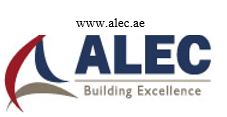
Founded in 1999, ALEC has adopted a unique recruitment and selection procedure based on the best ethical process while encouraging optimal use of the available resources, career promotion, and stringent compliance with the labour laws instituted by the UAE. The company has often ensured that it provides innovative recruitment services in its approach to the provision of strategic recruitment option. Properly designed worker engagement and induction programs allow for the smooth transition of the new recruits to the team members of ALEC.
Stretch ceilings Ltd

Founded in 2009, Stretch ceilings Ltd is another firm that has been in existence for about 20 years and lately, the company set up an office in Dubai with reputable product and service delivery efficiency (Schulte-Peevers, 2010, p. 121). The company provides ceilings in over 250 different colors and finishes. Among these are acoustic membranes, printed options and better performing lighting diffusers that are offered with a 12 year guarantee. The company is a major player and is dominant in the region especially for the provision these ceilings and finishes including the Non-PVC, metalized mirror range, and textile ranges, as well as lightPods. The stretch ceilings limited provides a wealth of knowledge and technical innovativeness to designs development, installation management, and widely experienced manpower for installation services.
German formwork Technologies

German formwork Technologies has grown to become one of the market leaders in the supply of the modern and sophisticated formwork and scaffolding systems in the UAE and other countries in the region. The company has experienced significant expansion in the region. The company is new and yet it has very effective organization that allows efficient supply of products and services to its clients in many of the projects being undertaken in the UAE. It is in fact one of the market leaders in the UAE and customer satisfaction is the main concern as stated by the management. This is why the management only wants the company to be looked at as a partner and a solution provider to all the clients. These services include service provision to areas like site supervision, technical support and consultancy in formwork.
Leadership Styles
James MacGregor Burns’s discussion in the ‘Leadership’ book postulates the idea of transforming leadership. Burns described leadership as a relationship of mutual motivation and advancement that progresses the followers into leaders and could change the leaders into moral agents. The transformational leadership theory gives clear differences between the theories (Schaubroeck 2007). As Bolden and colleagues have noted, transformational leadership enhances the morality and motivation of the employees (2003, p. 83). Transactional leadership concentrates on the duties and tasks requirements and then it makes use of appreciation and rewarding the followers for their performances (Aarons, 2006, p. 1165).
ThyssenKrupp Elevator is a firm that offers Elevators, Escalators, construction of bridges and moving walkways. Other services offered by the firm include modernized services. The company has a wide range of products and solutions, making it a major player in the industry. The name is prominent in the construction of train stations, hotels, offices, business complexes, airport, department stores, and villas. All this success is attributed to the leadership at the company. The organisation has very commitment leaders who have adopted consultative leadership. They always involve their subordinates in the decision making process (Loosemore & Al Muslmani, 1999). This is achieved by discussing major decision from the lowest level whereby the views of the workers are collected and then the necessary summaries are made for consideration in the final decision.
Leadership Styles in the UAE
Previous studies investigated the leadership styles in the Arabian nations, including the United Arab Emirates. Zaneldin (2006) studied the styles of decision making in the UAE among the national managers and also the Arab and foreign immigrants. The results drawn from this study showed that consultative style of leadership was leading (Randeree & Chaudhry, 2007). Moreover, other researchers investigated the decisions making styles of the construction company executive of Arab descent. These researchers reported that Arab managers were exceedingly devoted to the consultative leadership style (Adeyemi-Bello, 2001).
Specifically, some companies in the construction industry typify what kind of leadership is being practiced in the country. With many multinationals coming into the UAE, the construction industry is experiencing a boom. Australia is the largest exporter of construction products and services to the UAE. Good leadership has been seen such companies from Australia as Leighton, Woods Bagot, GHD, and Worley Parsons, among others, increase their revenue collection on their business activities in the UAE. This is the reason why these firms had been thriving, producing up to 8.3 million products in 2009.
Because of the involvement of workers in decision making and highly consultative leadership, S.S. Lootah has grown to become one of the biggest and most reputable firms in the UAE. In addition, the company has also developed a reputation of completing its project on time, often exceeding expectations. This was typical of participative and consultative kind of leadership whereby employees were actively involved in decision making hence boosting their morale (Randeree & Chaudhry, 2007).
Another example of a firm in the construction industry is the ZAS/PSE Company. This is a global, vibrant full-design consulting company. The company combined the experience of its founders, ZAS group which had worked in Canada for over 20 years, and Port Saeed Engineering which had a vast experience operating in Dubai UAE for over 30 years. The firm developed a unique leadership that has seen it now specialize in architecture, engineering and interior design.
The leadership strategy for the PBS & J Kenner and Isaak has seen the firm move to a distinctive stage of civil engineering practice. It was a multidisciplinary, technologically advanced, and operated in a very wide area. The company’s founders developed a culture of consultation and the involvement of workers; hence this has helped build a tradition of hard work and innovativeness (Yousef, 2000, p. 17). This lives on both physically and metaphorically.
Studies about other leaders in the UAE but from other nationalities had showed varied outcomes; The Jordanian leaders love authoritative management style across the industry. The Indians on the other hand exercised autocratic leadership style. Similar studies showed that employees would be committed to their jobs when they gained high levels of satisfaction (Adeyemi-Bello, 2001, p. 154). They also performed better when they perceived that their managers were consultative leaders. Most researchers suggest the Arabs like consultative and participative leadership (Ali et al 1995).
Leadership Styles in Different firms
Burns drew facts from the humanistic psychology movement when developing his study and from the transformational leadership, he proposed that transformational leadership could define, alter and elevate the qualities, motives and values of the follower, hence attaining the important change of the process needed (Toor & Ofori, 2006). He recommended that there was specialized power found in transformational leadership. Transformational leadership theory highlighted mutual trust development of leaders from the followers thereby allowing for progressive and succession leadership (Schaubroeck 2007). As part of the ThyssenKrupp’s transformational leadership, the management team has younger members who are supervisors at the projects involved. This way, they are able to grow as protégés and become experienced managers so that as the older managers retire or leave the company for other reasons there will not be a leadership gap.
In the construction industry, many styles of leadership also apply, such as the autocratic, participative and transformational approaches, among others. However, no one particular style is wholly agreed upon as the most efficient for the construction industry. However, leaders in this sector were able to determine which approach or style needs to be adopted (Adeyemi-Bello, 2001). The most used or preferred had been the consensus, democratic and team management leadership styles (participative leadership style). For instance, the AB Building cont is a company that comprise of several construction firms that uses participative approach for leadership. This is because construction entails a number of activities that require proper and efficient communication. From designing to finishing, there has to be proper coordination and as such, the communication structure is not up-down design but it is dynamic (Adeyemi-Bello, 2001). Subordinates can communicate with managers directly by skipping the supervisors and middle level managers. Communication from one department to the next is shared freely without a lot of bureaucratic obstacles (Buddenbaum & Novak, 2001, p. 92).
There is enough literature that helps scholars to understand the factors that affect the choices of leadership style and the way they were developed (Mondy, 1990). Nonetheless, in the real world, the actual exercise of the leadership has identified that there is no one style of leadership that can be exercised by a manager. Rather, the mangers apply combinations of the different styles.
Factors Influencing Leadership
A number of factors determine the type of leadership style to be applied. Historically, researchers had maintained three forces that influence the proper leadership style. There were forces inside the leader himself /herself, the employees and the people in that circumstance (Toor & Ofori, 2006). The factors below determine the leadership style: position in the leadership hierarchy, the size of organization, the role of the organizational unit, the characteristics of the job and the available technology, stage of the company in the organizational life cycle, crisis situation and lateral interdependence and the employees’ competences and their productivity (Yammarino et al, 2008, p. 702).
There were different opinions that present the argument that leadership style is a product of the zeal and participation and the outcome of commitment to the organization and the strictness of supervision needed (Buddenbaum & Novak, 2001). Another argument by Maheshwari (1980) is that the style of decision making was drawn from complicated interactions of a number of factors. This was also evident in some construction firms. S.S. Lootah and ZAS/PSE leadership has often made its decisions based on a number of factors that were determined by survey of the industry. They include the circumstance and the organizational characteristics, the type of decision and the qualities and preference of those responsible for making the decisions. This style is basically Laissez-faire Leadership.
The level of difficulty in accomplishing certain roles in an organization was very crucial in the determination of the appropriate leadership style. The type of leadership that leaders use was dependent on the nature of the tasks being conducted, the authority of the leader, the employees’ experience, organizational culture, the preferred leadership style by the leaders or the employees as well as the available time to complete a task (Loosemore & Al Muslmani, 1999).
There was no industry identified that exercises a typical autocratic leadership style. However, these styles sometimes overlap each other. This means that even though a company can be identified to be practicing transactional leadership styles, there are some characteristics of a participative leadership and so on
Impact of Leadership Styles
Studies show that the construction industry in the UAE is usually affected by the Emirati culture or in general, the Arab culture. However, over the past few years, the growth of the country into an international market had resulted in the creation of a number of cross-cultural groups and the development of dialogue is the reason behind the international way of transacting business across the UAE. Studies of leadership styles contend that the behaviour was culturally determined and therefore varied greatly across cultures (Appel et al, 2007). It would therefore be pointless to act in a democratic manner in a situation whereby authoritarian leadership was a culture that endorses that humanistic leadership would blend well and accommodate leaders who were sensitive and understanding. Leadership decision making styles were different in every country and the UAE culture was distinctive and usually dominant in managerial reasoning and behaviour (Loosemore & Al Muslmani, 1999).
Audex Fujairah LL FZE applies democratic type of leadership. This is because the Arabs sometimes consider friendly behaviour in business to be more important than qualification. Therefore, treating their employees with hospitality and respect at times is more valued than having them to the job and not addressing their concerns. This firm has a management structure that gives workers a say or a voice in the activities of the company. The UAE cultural aspects affect the leadership styles even though the styles are mainly determined by industrialization. The cultural differences sometimes limit the ability to apply certain leadership styles universally, like the way in which transactional and transformation theories of leadership do (Bass et al, 2003, p. 215). This is why democratic style has been working for Audex, they are able to address the views of different people in the company.
Al Baraha Land Building Contracting and General Maintenance Company in Dubai respect the personality and appreciate the knowledge of its employee. For this reason, the management or leadership style has been the participatory style. This is in part due to the fact that the company has a diversity of nationalities working in its department and to be sensitive to them, they are to be allowed to make their knowledge contribution without prejudice. Besides, the firm targets to tap the experience of these workers and nurture them. This can only be done when they are actively allowed to participate. The UAE culture has impacted on the current leaders and this has nurtured consultative and participatory styles (Randeree & Chaudhry, 2007). The construction companies allow and accept the suggestions from employees and the design of the owner especially personal participation in the process of designing. This ensures that all the projects were unique to the requirements of the clients. The construction firm leaders involve a wide range of actors in decision making like the civil society and the government before they venture into huge projects (Yousef, 2000, p. 17).
The cultural diversity has had a great impact on the leadership style in the UAE contracting industry since despite the fact that Muslim as a religion may have many restrictions of interactions and certain type of business based on its shariah laws, the modernisation of the economy has caused some compromises to be made (Stashevsky & Burke, 2006, p. 569). Initially, women were only considered to be homemakers and their place was at home taking care of their children and husbands.
In today’s economy, there are more women getting into the formal employment sector. Interaction with men was also very restricted but today, women can work alongside men in the industry. However this faces serious impediment from conservatives (Antonio & Gosling, 2008). The KCPC construction LLC Company understands that the company should engage in friendly competition with its rivals and work with partners for success. This requires the establishment of better management skills at the home level. This implies that the leadership has been influenced to always allow participation and engagement of most stakeholders before reaching a decision (Yousef, 2000). They engage in group discussions and they draw decision from the general view of the employees and other players. Discussion was particularly important in the current world of construction as it has a mix of multicultural workers therefore leaders need all of their views to reach an all encompassing decision (Stashevsky & Burke, 2006).
Research Design and Methodology
This chapter offers a description of the study area, the study population, the process of sampling and the sample size used in the study. The chapter also offers explanations about the method of research applied and the procedures used for data collection and how the analyses were conducted.
Site Selection
The UAE as a study site was chosen for two main reasons. First, the UAE is growing very fast in terms of corporate business and hence attracting diverse multinational companies. Unlike most of its neighbours, the country was seeking to continue diversifying its economic activities and to reduce its dependence on oil. This is the reason behind the emergence of the contracting industry in the UAE. The United Arab Emirates came into existence as a nation in 1971 when it was established by the coming together of the seven emirates (Walker and Butler, 2010, p. 336). These emirates include Dubai, Abu Dhabi, Sharjah, Ajman, Umm Al Quwain, Ras Al Khaimah, and Fujairah. Before its establishment and dating back to the 1850s, the union was controlled by the British colonial government and each emirate had its own accord with the British government. At the time, these emirates were known as sheikhdoms or crucial states.
Study Population
In the United Arab Emirates, contracting industry leaders were chosen for the current study because of their importance to the economy of the country. The construction sector has made significant contributions to the nation’s gross domestic product (Noack, 2007, p. 85). This thesis therefore studied the implications of these leaders on the industry. Two important leadership styles were the focus of study. Therefore both transformational and transactional styles of leadership were investigated with regard to the industry’s management and supervision of employees (Bass et al, 2003, p. 210). The results would then be correlated with the satisfaction and self perceived work performance of the participants. According to the study’s hypothesis, employees’ leadership disposition and self-esteem emerged as the main moderators.
Sampling design
This research identified managers from construction companies, and invited them for participation in the survey (Judge et al, 2002). As expected, many of the participants accepted the invitation. Only a few declined for a number of reasons, like lack of interest, and time limitations. Moreover, Voluntary participation was allowed so that only those interested would participate and would leave at their own volition and not compelled to take part. More women were encouraged to take part in the survey because apparently, the construction industry in UAE had very few women in management positions (Mason, 2007). Those present were mostly assistants to men or secretaries.
The age range for the participants was expected to be from the age of 22 to 60 years old with a mean of 38 years. The participants were all in middle and senior management positions. The research provides allowance and suggestion for future studies which would seek to identify the viewpoint of the employees.
Unit of Observation
The unit of observation for this study was determined to be the leaders of various construction companies. The leaders were selected from a variety of position is management. The eligibility criteria were that the participants had to be holding a management position in middle or top management and only from the construction companies (Mason, 2007).
Data Type and Sources
The study was mainly explorative, utilizing both primary and secondary data. The data was collected from participants who were randomly selected from a number construction firms (Mason, 2007). Secondary data as already indicated was collected from available literature. Primary data was also collected directly from the participant through an administration of the study’s questionnaire.
Methods and Tools of Data Collection
To assess the leadership behaviour, the Multifactor Leadership Questionnaire (MLQ) was modified to evaluate the leadership styles of the managers in the construction companies. The main issues of assessment included communication, attitude, contingency, and functionality of the leaders (Madlock, 2008).
The questions mainly takes the format of Likert type questions with a scale of 1 to 5 with 1 as lowest score, 3 medium, and 5 as the highest score.
After a conversation with the members of the study team on the first day, they were briefed on the study’s objectives, and emphasized on the style of leadership and the perception of the low level managers regarding their seniority in the construction industry.
The study begins as a survey, meaning that the statistical data collected was easily measured and recorded. Random selection of participants was used as already indicated. The participants consented to the study, and data was collected by use of questionnaires which were distributed to the participants to fill on their own (Mason, 2007). However, they were allowed to ask for some clarification whenever they encountered questions they thought were ambiguous.
Since this was basically a quantitative research, the initial study entailed observational strategies and a survey. The survey attempts to ascertain the styles of leaders under the main themes under literature of study tactics of leadership. The research questions as designed in the questionnaires helps identify the leadership styles based on the beliefs, attitude, and functionality of the leaders. The study looks at the commonality of the leaders’ responses and developed themes and styles of leadership that were implied to be common and dominant in the UAE.
Questionnaire Objectives
The survey questions were designed strategically to answer what are the styles that leaders use to lead their subordinates in the UAE construction companies? The goal of this question was to investigate the manner in which the leaders communicated to their subordinates. This was shown in the first 15 questions of the survey.
The questions allowed identifying a number of objectives that were to be achieved. This was the reason why the study focused on the leadership styles of managers in the contracting firms. The Hersey and Blanchards (2008, p. 43) situation leadership model was important in distinguishing the behaviour of leaders and categorizing them.
On the other hand, the aim of investigating leadership styles was to help managers to understand themselves and their leadership impact on the rest of the team. Project managers could have leadership styles that impede performance; this ought to be brought to the open. Therefore the study aims at identifying or determining the most appropriate leadership style that the construction company managers could utilize to better their performance in UAE (Hersey et al., 2008). Leadership styles were used to motivate the workers to perform better in certain tasks hence giving timely and quality outcomes and at the same time inspiring much effort from the customers.
The survey questions also help in determining the leadership styles in the construction projects as being applied by the managers. In this regard, the focus of the study was to determine the practical leadership style being used by leaders in comparison with the ideal leadership styles as presented in theory. Therefore this research helps to examine the efficiency of the actual styles of leadership.
Moreover, the survey questions from 17 to 25 help deal with potential, efficiency and reliability of the current framework of leadership in the contracting industry. They also relate to the impact of existing culture and local religion on leadership of the UAE contracting industry.
The aim of the first 15 questions is to determine the level to which the respondents would agree or disagree.
“To investigate some leadership styles of leaders in the UAE contracting industry.”
The following tables show the questions related to the first objective:
Question 16 gives the respondent the option to choose which leadership style they would prefer to implement in their contracting careers.
The aim of questions 17 to 25 is to determine the level to which the respondents would agree or disagree.
“To test the potential, efficiency and reliability of the current framework of leadership in the contracting industry”
“To understand the impact of existing culture and local religion on leadership of the UAE contracting industry”
The following tables show the questions related to the second and third objective:
Potential, efficiency, and reliability:
Culture and Religion:
Data Collection and Analysis
The previous chapter explained the survey design and methodology for this dissertation. This chapter will analyze the survey results which are presented in Excel tables and charts.
Results Summary
Results Summary for Question 16
Results Summary for Questions 17 to 20
Results Summary for Questions 21 to 25
Results Analysis
Results Analysis for Transformational Leadership Style (Questions 1 to 3)
- Having a good relationship with workers boosts productivity
- Respect and trust are mandatory for better functionality
- I believe in influencing team members for attainment of objectives
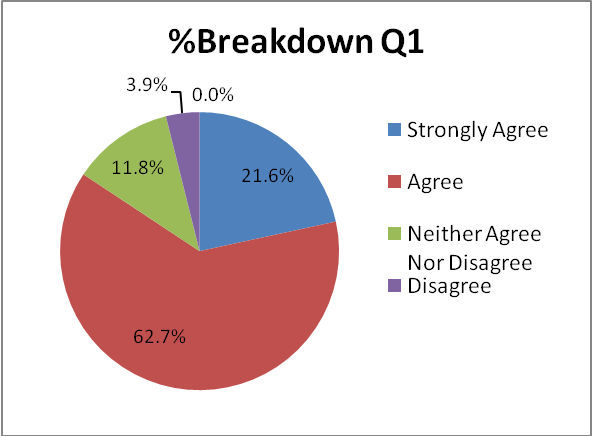
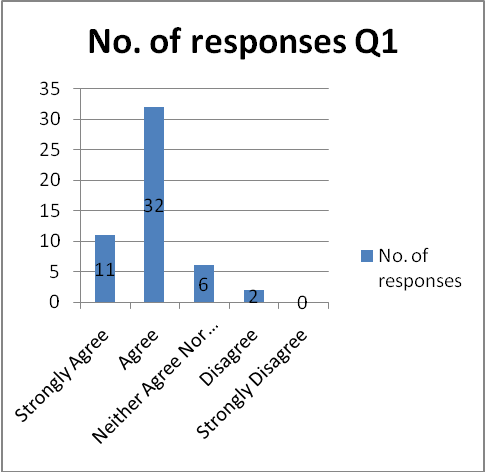
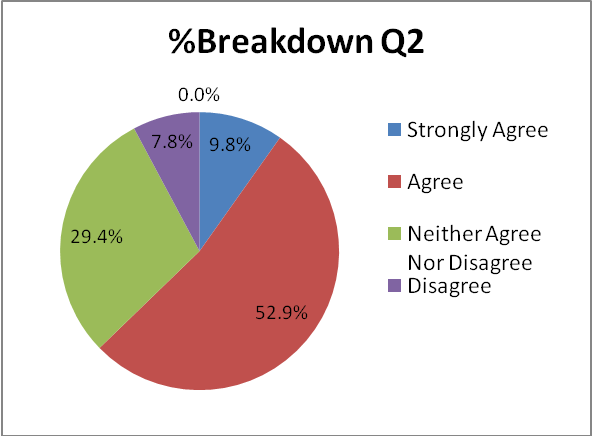
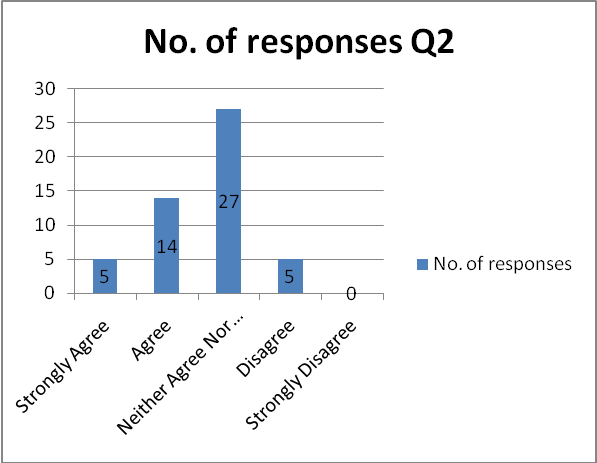
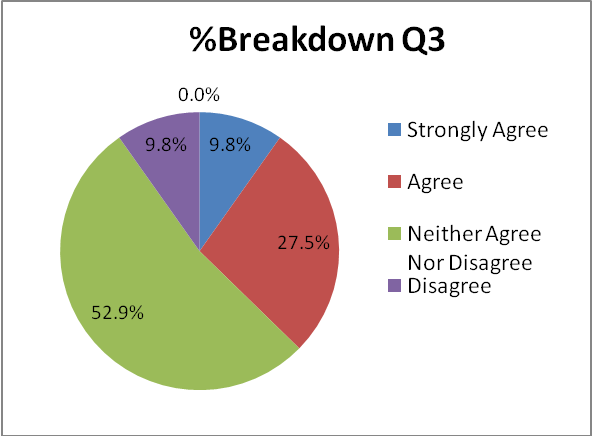
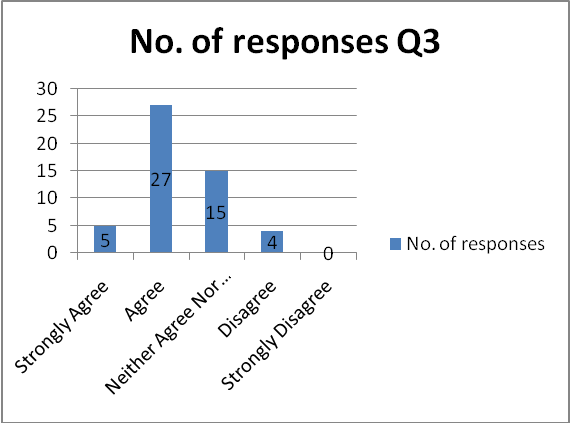
Of all the respondents interviewed, 84.3% agreed that developing a good relationship with the workers would boost the productivity of their companies. This is a very strong gesture towards the use of transformational leadership style. As regarding respect and trust for bettering functionality, 62.7% of the respondents agreed it was necessary. However a good number (52.9%) did not know whether or not manipulating of influencing employees would enable attainment of the business objective. Generally this shows that leaders embraced transformational leadership styles.
This transformational leadership style is very unique in that it can help the leaders to attain very extraordinary things against the odds; For instance, being able to establish a unique economic structure of a company that was on the verge of collapse into a thriving one. This theory of leadership style highlights the significance of having an inspirational leader who is dedicated and loyal to the company. It is with such believes in mind that the majority of the respondents agreed that good relationship would result in maximal productivity and that respect and trust were essential for efficient functionality (Bass, et al., 2003).
Results Analysis for Transactional Leadership Style (Questions 4 to 6)
- As a leader you must understand what motivates your subordinates
- There should be both reward and punishment systems designed to encourage hard work
- Employees should understand the systems of reward and what needs to be done to attain the reward
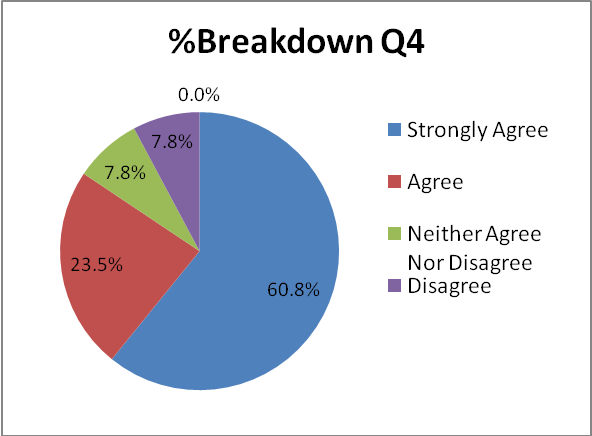


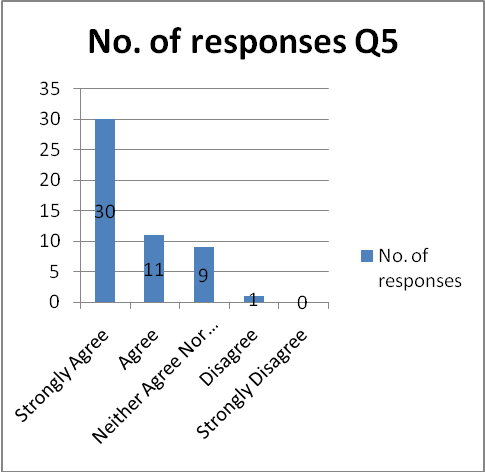
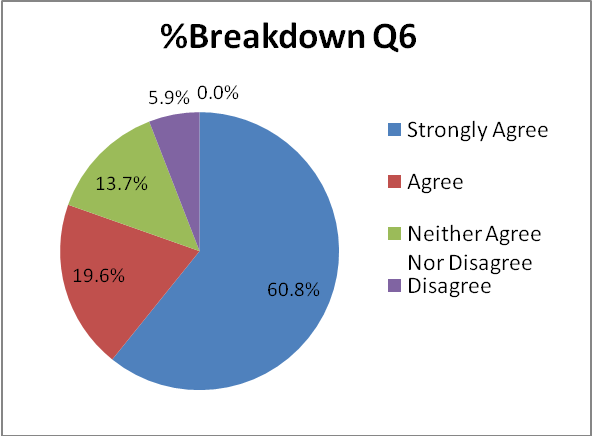

From the questions testing whether the leaders in UAE contracting industry believed in transactional leadership style, the results of the test or the outcomes show that many leaders affirmed that it was important for them to understand what motivated their employees. 84.3% agree to this question. 80.4% of the respondents agreed that a company should have reward and punishment systems in place designed to motivate hard work. It was also pertinent that the employees should understand what was required to attain the rewards as well as the types of activities that would result into punishment. With great responses towards this, it is clear that the leaders in UAE applied transactional leadership style. This is a style that is role or task oriented and the model of achieving this is basically by reward deputation of the employee performance. There does not need to be trust between leaders and employees as in transformational leadership. Psychological and materialistic fulfilments are just enough for encouraging hard work. Therefore as a result, the companies in UAE have been able to set up award systems like best employee of the year etc. simply put, this style of leadership is a form of exchange system, it rewards better performance and gives punishment for mistakes (Judge & Piccolo, 2004)
Results Analysis for Laissez-faire Leadership Style (Questions 7 to 9)
- Subordinates perform better when they are given work autonomy
- I believe in delegation of duties to my subordinates
- Allowing subordinates to make decisions on their own enhances performance


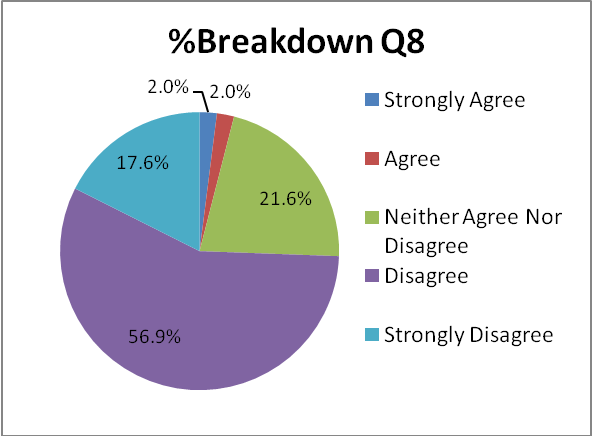

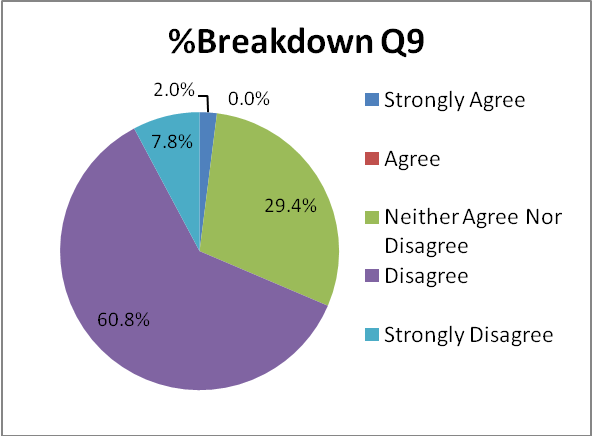
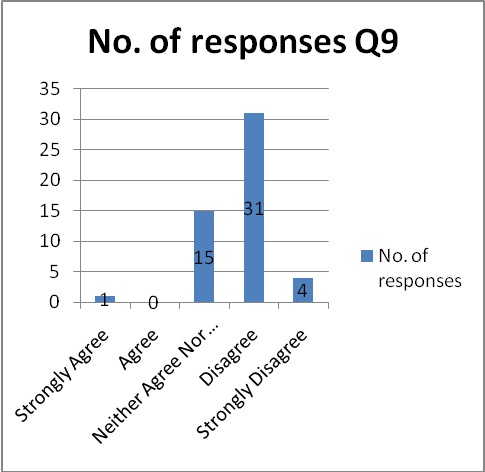
The United Arab Emirates leaders always want to have hands-on approach to leadership of their firms and they take part in every decision and tasks that take place. This is the main reason why regarding the laissez-faire leadership, this does not have a chance in the country, at least not now. Most of the leaders do not agree that they employees would perform better when given maximum job autonomy. The question responses indicate that 74.5% of the respondent disagreed with the statement that autonomy leads to better performance.
In the same line of thought, leaders in the construction industry would not just delegate their duties to the subordinates. This is made clear when 74.5% (strong disagree and disagree) said they did not believe in delegation of duties to workers. Furthermore, the leaders would not let independent decisions from employees in their companies. 68.6% of the respondents would not let independent decision making. As much as leaders in UAE embrace transformational leaderships of good relationship with employees, trust or transactional approach where they establish motivation systems, they still want to have the feel of whatever happens. They believe in their own-self more. The style to be adopted is contingent on the individual characteristics of the leader, the employees and the type of business. But apparently Laissez-faire is not a favourite in the UAE contracting industry.
Results Analysis for Participative Leadership Style (Questions 10 to 12)
- A leaders is a director and a team player
- The opinions of team leaders are equal to contributions of any other team member
- Most of the time I take the ideas of the subordinates to implement
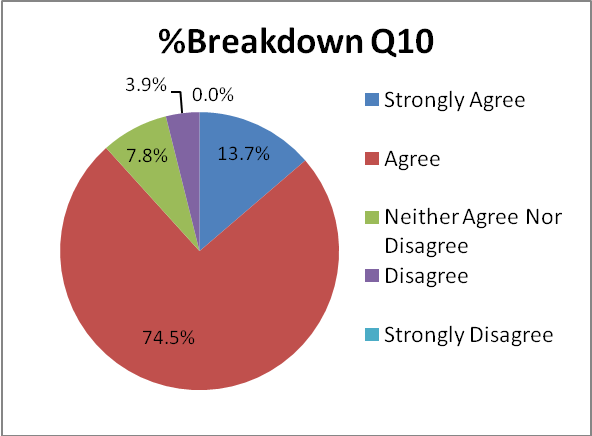

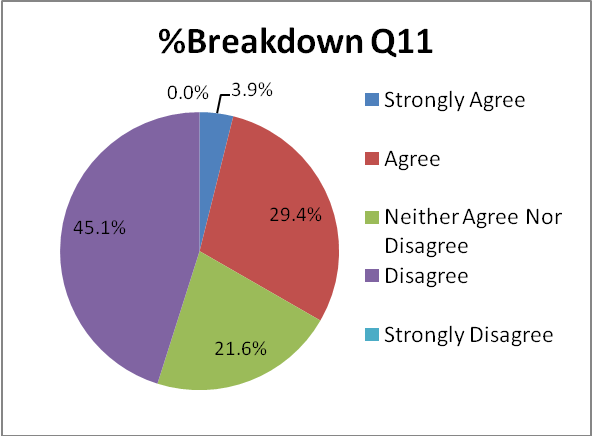
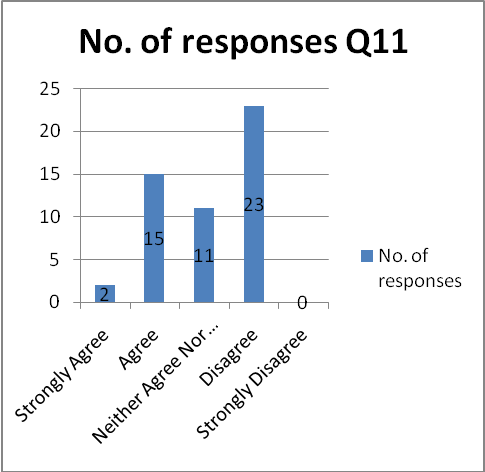
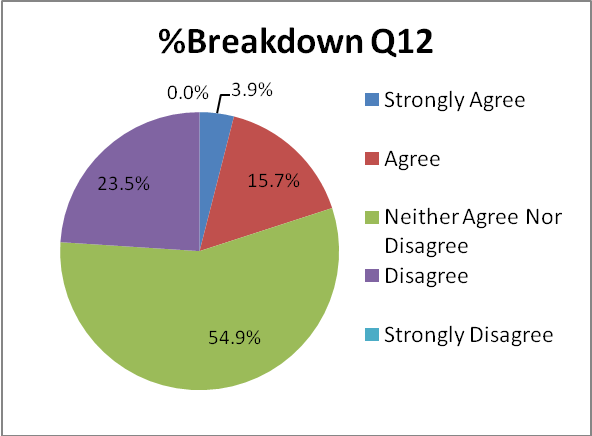

Leaders in the UAE contracting industry are to some extent liberal and would grant their workers powers to do certain tasks without close supervision. This is because they will also be part of the team and will ensure that things or rather the projects being undertaken do not go wrong. Therefore collective decision making can be allowed and the leaders will actively take part in group activities rather than delegate or just impose ideas on the team. This is why majority respondents (88.2%) agreed that a leader should be a team player and only direct the team towards the right direction. Most of them also agreed that the opinions of the leaders should not be the final word as these opinions were as good as those of any other member. This means the final decisions would be reached after compromises and consensus on certain things from all the members of a team. Despite being able to allow members contribute their ideas and opinions into the group, leaders still find it very hard to endorse such ideas complete and implement them. This is seen where the respondents who neither agreed nor disagreed were the majority at 54.9%.
Results Analysis for Autocratic Leadership Style (Questions 13 to 15)
- The leader defines the project problem, designs solution options and assesses outcomes
- The leader should be totally in charge of all decision making needs
- The team should always follow the directives of the leader without question

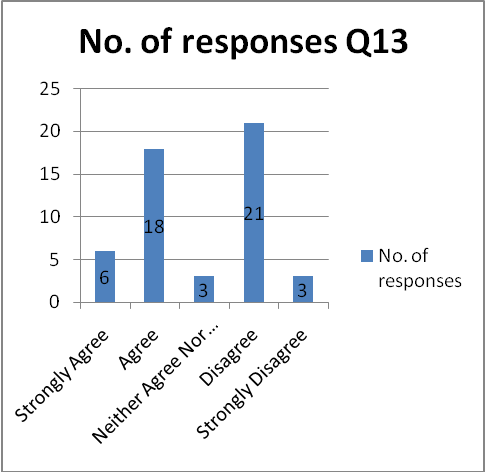
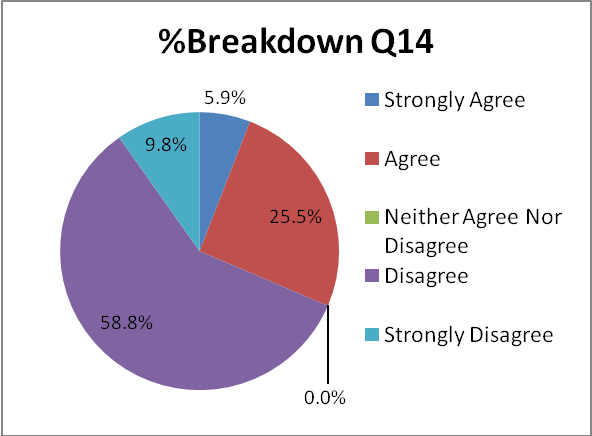
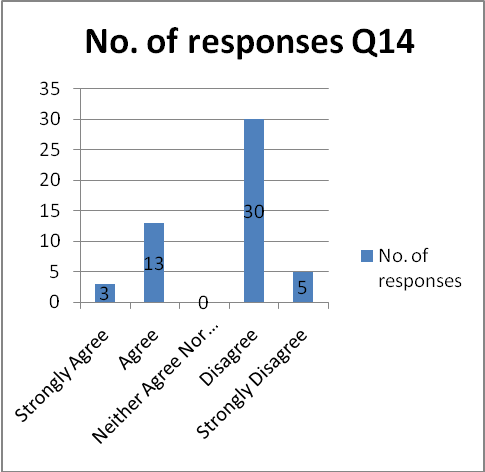
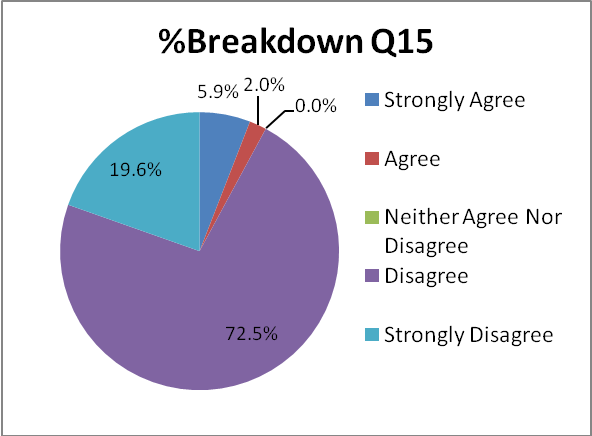
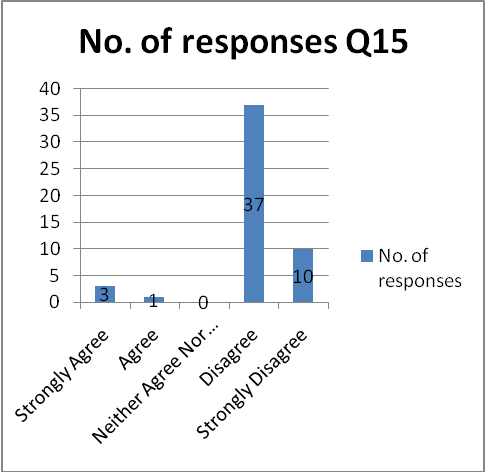
The autocratic leadership style is where the leaders is fully in charge and therefore defines the project problem, develops the strategies to implement and solve the problems and also evaluates the outcomes. It seems that as much as the leaders want to have the control of the team members, they also love giving them freedom to exercise some level of autonomy. This has been very tricky to exercise a totally autocratic leadership style. The results show that those who agreed and disagreed were 47.1% each. When asked whether the leaders should totally take charge of the decisions made, the respondents disagreed to a very high percentage. Those who disagreed were 68.6% and those who agreed were 31.4%. This means that inasmuch as the leaders would want to give employees some autonomy, they still do not want to give away the authoritative powers. Most of the leaders would want to tell them what to do and workers have very little autonomy. 92.1% of the respondents still disagreed that subordinates should just follow directive of leaders without question.
Results Analysis for Question 16
- Which of the following would you describe as the best leadership style in the UAE contracting industry?

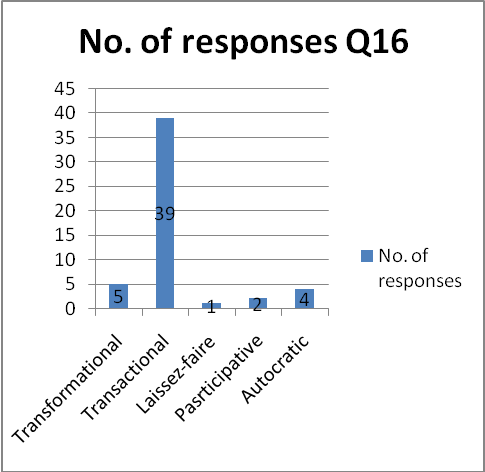
Most of the respondents report that they thought transactional leadership style was the best. The reasons behind this are varied. However, the main reason is that this type of leadership is more conventional. The mantra behind it is that the work performed by the workers is exchanged for their effort. The employer or the leader provides rewards to hardworking individuals. The leader then supervises the workers intimately and they also take punitive measures whenever necessary. This is called the active management. On the other hand leaders can use passive management where workers are inertly managed. This is very cheap to implement because the managers does not need to have to establish strong ties with the employees (Bono & Judge, 2004; Elkins & Keller, 2003; Judge & Piccolo, 2004).
The leaders in UAE preferred to use transactional style and consider it the best since it is a typical managerial leadership. This concentrated on the role of supervising the workers and the concept of teamwork. The preference continuum was Transactional 77%, Transformational 10%, autocratic 8%, participative 4%, Laisse-faire 2%. The reasons for this is that employees will perform best when the company they are working for have a very well defined chain of command. Besides, the employees are easily motivated by rewards and they will be barred from poor performance by executing punitive measures. In order to ensure that there is good performance, the subordinated required careful and close monitoring so that they can be able to meet the expectations of the company. Lastly, the role of the employees is to follow instructions and the directive of the leaders and they will not get into trouble. This makes management easy and efficient since the roles of the managers and employees are well defined.
Results Analysis for Potential, Efficiency, and Reliability (Questions 17 to 20):
- The current success of the contracting industry in the UAE is attributable to leadership styles
- The leadership style is effective because leadership blends well with the needs of the subordinates and the clients
- Participative leadership promotes participation employee hence encouraging performance
- Because of the constancy of style, the industry is consistent in good production and growth

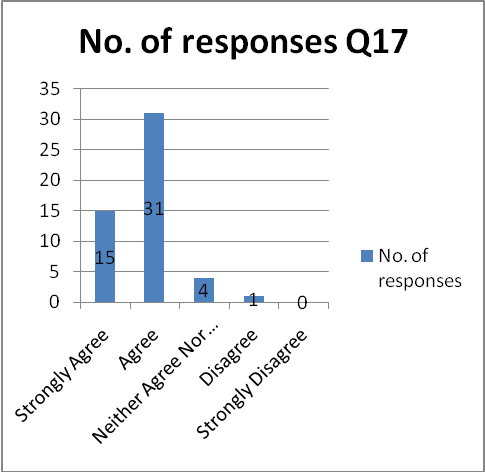
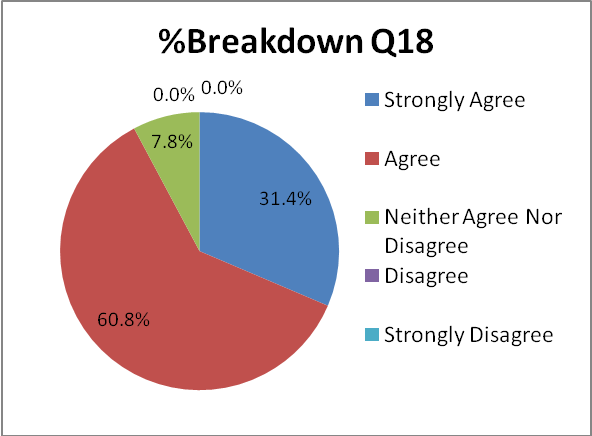


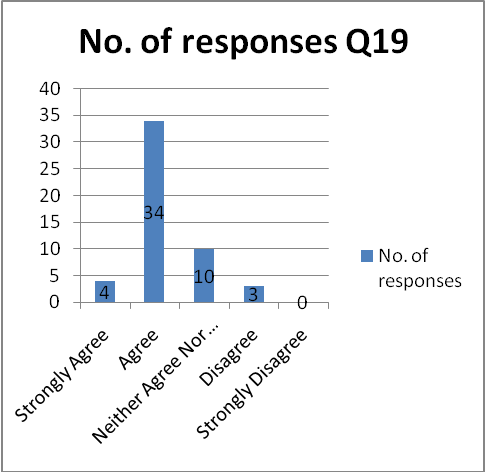
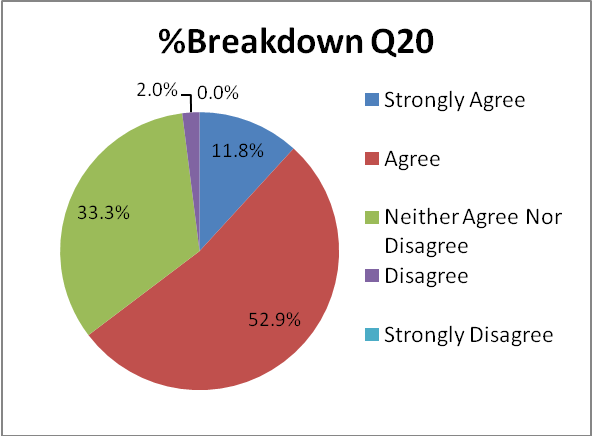

The success of many companies in the construction industry is attributable to leadership. And the UAE leaders who were sampled for this study agreed at 90.2%. Though some leaders may not agree or declare explicitly to this, contemporary leadership is all about making successful leaders instead of the just good managers. The respondents clearly showed that the leaders exercised transactional leadership styles to a greater level and this was all about creating reward qualities which resulted into success. Success in this context means that the employees achieve the desired outcomes as required by the organisation.
The 18th questions states seeks to find whether the style of the leaders lead to success since it blended with the needs of the subordinates. Essentially leaders are very important in any organisation and it is through good leadership that the companies have thrived well. The statistics of this study shows that participants agreed at 92.2% that the success was brought about by good blending of the leadership styles and the needs of the workers. At its basic understanding, leadership is about being able to persuade the followers like a group of team members to actively pursue certain goals of which the leader shares with the followers. The leaders have a duty to rally and motivate workers, this has been a very reliable leadership style where transactional style of leadership works as the effective means of meeting these goals.
By having the leaders and the employees work together as a team, joint participation is encouraged. This way, the leader do not pursue they own individual ambitions but share the same goals as the team of workers they lead. The character of the leaders has to show the group values despite the prevailing situations. Respondents agree that participative leadership contributed to better performance (74.5%). Even though the leaders in UAE have wanted to give employees more freedom at work, the authoritative power has not been easy to let go. Leaders still actively work to envision and help the followers to understand the objectives of the companies they work for.
Leaders do not usually cause success to companies on their own. Good leaders usually struggle to establish connections and develop relationships with their followers. This means that leaders are often required to be adaptive and very wise, knowing when to make certain decisions, use certain skills, et cetera. Being consistent enable development of trust from the workers and the implementation or use of certain leadership styles for a period of time develops a culture of leadership, the transformational leadership where the followers are also mentored to become future leaders as a result they would be better leaders. It is with this in mind that the respondents greatly agreed that the constancy of leadership style in the contracting industry had played a very good role in ensuring better production and success of the industry.
Results Analysis for Culture and Religion (Questions 21 to 25)
- The unique friendly culture has inspired the use of styles of leadership like participative, transformational, etc in the UAE
- The Muslim culture has encouraged autocratic leadership to reduce interaction of leaders and subordinates
- The increasing ventures from foreign companies in the UAE has transformed the leadership styles of the UAE contracting industry to a more friendly type
- The leadership of the UAE contracting firms has grown to respect diversity in ethnicity, religion, nationality, language, and race and has accepted the differences
- Teamwork, involvement of women, and greater interaction in the UAE contracting industry has been influenced by the west
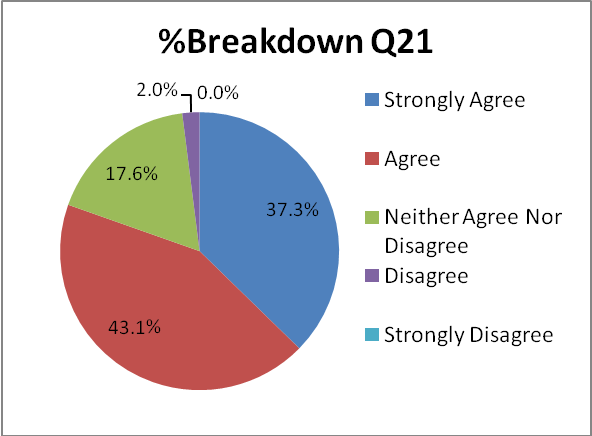
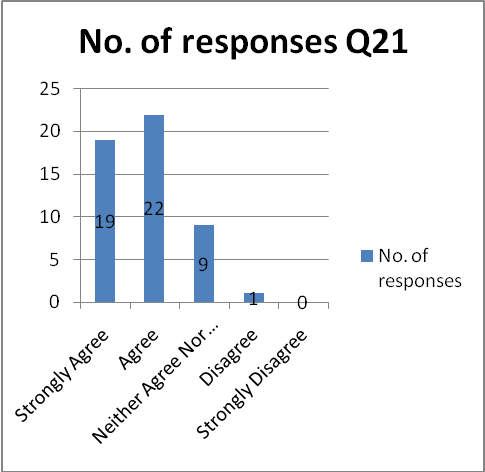
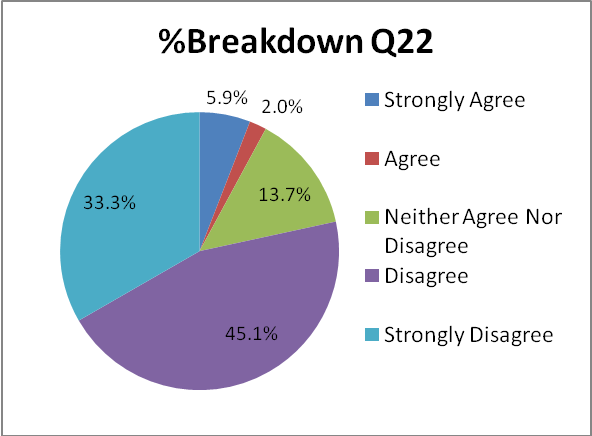
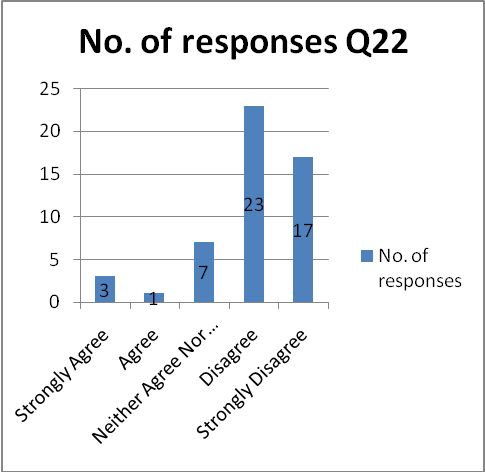
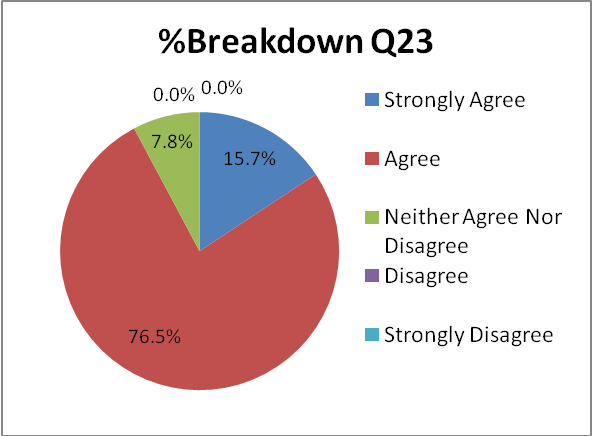
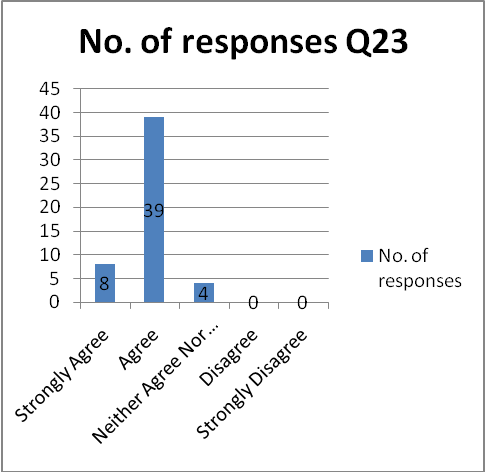
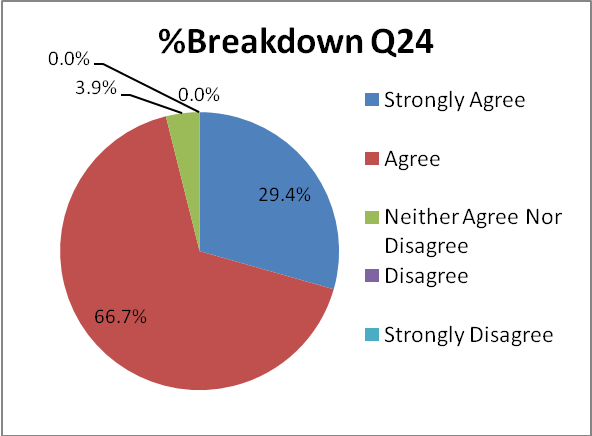
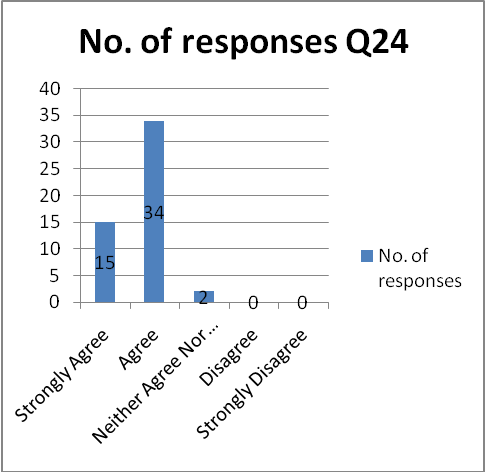
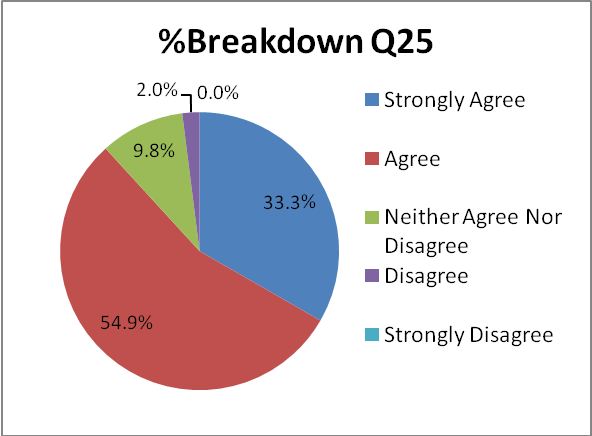
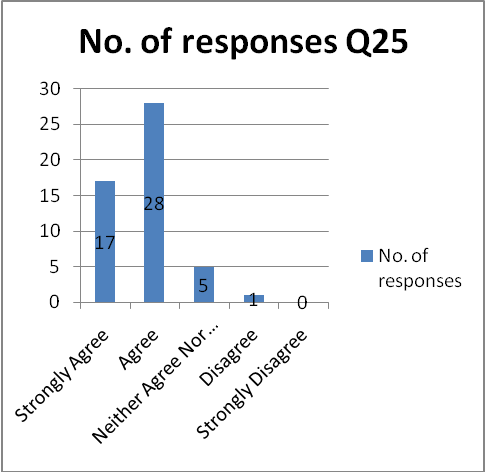
The respondents interviewed showed that to greater extent, they agreed with the statement that the unique friendliness of the UAE people or the Emirati culture had contributed to the leadership styles and the success. The Emirati culture draws most of its values from the Islamic religious conviction and the traditional Arab and Bedouin culture. As the country becomes more cosmopolitan, its culture has grown to become more diverse. Islam and Arab beliefs have had a great impact on the industry in terms of architecture, lifestyle and general behaviour. The respondents agreed at 80.4% that their leadership style were inspired by the unique culture.
The idea that leadership was linked to culture and religion was addressed by question 22. Most of the past literature has only focused on discussing leadership based on their personality and relationships with the followers (McNamara 2003). This research however also sought to address the idea that culture shapes people’s personalities and offers a meaning to the context in which the leaders perform. On being asked whether the autocratic leadership style had been influenced by Muslim culture, most of the respondents disagreed (78.4%). The respondents thought that democracy was in fact more compatible with Islam that normally perceived. In terms of business and economy, the team members or the subordinates will show passive resistance when a leader demonstrates such authoritative leadership where there is unilateralism and fulfilment of singular objectives.
Even though Kabasakal & Bodur 2002, p. 47 states that some of the teachings of the Holy Quran imply that Islam supports inepuality of power and authority. According, they state that Islam advocates that followers accept the decisions of those in authority or leadership position where they are not required to criticise the decision of their seniors. Hofstede addressed this concept in Middle East and found that they were high score on the same. There was power distance between the leaders and followers. Nonetheless the response shows that the leaders disagree on this. Thought the level of autocratic leadership was significant, the respondents believed that was a personal attribute not a religious influence.
The western countries have often had better management and leadership styles where they have been successful because of creating more friends and networks. However, the UAE has naturally had a different type of leadership in business. Companies in the construction industry used to be dominantly owned by individual who believed in strong hierarchical structures. Therefore management and decision making would be made solely by one person. The owner would be respected and revered to some extent. However as more companies from abroad move in and set up environment where the managers work together with the team members, the UAE have changed learnt to work with employees. Titles were very important in UAE and should be recognised where an engineer was to be referred to as Mohanda and a professor as Ustadh, et cetera. However, the western countries are more liberal and titles are not a must. The respondents agree that the change to a more friendly leadership style was as a result of the influence from the west (92.2%).
The leadership of the UAE contraction firms has grown to respect diversity in ethnicity, religion, nationality, language, and race and has accepted the differences. Respondents agree with this statement at 96.1%. The leaders in the UAE like doing business in person. The relationships among the leaders and workers as well as respect for people are very important for the success of businesses. In order to achieve this, the leaders have to be able to conduct face-to- face meeting. As a consequence they have learnt to appreciate other people’s religion, language, race and ethnicity. To develop friendships, the leaders also like spending time with counterparts so as to foster better relationships.
The culture and religion considered women to have different roles to men and they were mainly to stay at home. However, with civil reformation in the West which spread to the East, women are having more authority to do whichever job they like. They not prohibited visiting places where men are dominant anymore. The Arabs have been very conservative with their culture. Even though much has changes, things like dressing should always be modest; one should always accept invitation to social events etc. 88.2% agree that Teamwork, involvement of women, and greater interaction in the UAE contracting industry has been influenced by the west
Conclusion
This study tested the various types of leadership styles found in UAE contracting industry as it was the main aim, “to investigate some of the leadership styles of the leaders in the construction companies in the UAE”. The contracting industry and specifically the construction companies were selected for the study because of their importance to the economy of the UAE. In the recent past, companies have made significant contribution to the country’s gross domestic product. There are a range of leadership styles used but dominant leadership styles were found to be the transactional and transformational leadership styles. To understand the styles, it was important to differentiate them from each other, each style of leadership was described and questions related to it addressed.
Transactional leadership style was dominant of all the fives styles studied mainly because it is simple to execute and run as it was based on the simple logic of exchange and reward and sanctions. The leaders and the subordinates always get into the agreement either explicitly or implicitly but the agreement just comes. It is easy to set up systems of reward like salaries and promotions of employment benefits. In the same manner the leader can execute punitive measures like demotion, pay cut or even termination of employment. This leadership style may not be satisfactory in most of the situation but works well for the leaders. Some critics even argue that such leaders do not even qualify to be termed as true leader because of the type of manipulation involved. However it is pertinent to note that an organisation cannot explicitly exercise a pure transactional, transformational or laissez-faire leadership or any other for that matter. The style fluctuates on a continuum and this is what makes the leaders successful.
In order to test the second objective which was to investigate the potential, efficiency and reliability of the current framework of leadership in the contracting industry, questions 17 to 20 were designed for efficiency of leadership. Since the leaders in the UAE contracting industry exercise mainly transformational and transactional leadership styles, the success of the industry can actually be attributed to the leaders. But one should but in mind that it’s not only the leaders who bring about change but they play a greater role. For instance in cases where they employees may tend to sit back and wait for someone to guide them or not wanting to take responsibility of their performance, strong leaderships is required, like transactional or autocratic styles. However, since at some point employees cab rebel, when the leaders are hard on them, there is need to have a very good and friendly leadership like transformations leadership where the leader finds followers by being friendly to them. This means that the leadership styles do not serve as substitutes to each other but only applied to the convenient circumstances.
The third objective was to understand the impact of existing culture and local religion on leadership of the UAE contracting industry. Essentially, the literature review revealed that the United Arab Emirate had grown to become a multicultural state. However, the country still faces some infrequent episodes of cultural conflicts especially between the expatriate and the citizens in the contracting industry. The Emirati culture is build around Islam and Arab as already revealed and the expatriates have come from different regions of the world bringing different cultures and religion. As a result, diversity has made UAE to be a very liberal country. People have become more tolerant to other religions foreigners no longer have to worry about persecution. It is therefore true that the existence of transactional, transformational, and autocratic styles as the main models is because of the current cultural and religious influence. There have been a lot of compromises and adjustments to a friendly environment which has fostered growth and development of the construction industry.
The hypothesis, ‘Construction firms in the UAE are efficient and successful because of the efficient and reliable leadership of the contracting industry’ holds true. This is because the findings show that transactional, transformations and autocratic styles were dominantly perceived to be the best leadership styles. The assumption was that leaders preferably applied the styles they thought were the best, as other researchers have shown that use of transactional and transformational leadership was effective, the same is true for this study (Bass, et al 2003, p. 218; Bono, & Judge, 2004, 910). In most cases again, company leadership is as a result of good leadership. Therefore, as the constructing industry continues to thrive in the UAE as literature search revealed, then the hypothesis that the success attributable to the leaderships is true.
Recommendations
For effective and responsible leadership it is important to understand different leadership styles. The main aim of the research tailored around achieving this. This is why it was necessary to investigate the common leadership styles used by leaders in the construction companies for management and offering leadership in the UAE. For instance, the transactional style is based on two main principles. The contingent rewards what is described as managing by exception. On the other hand the transformational leadership has four main components namely personal or individual consideration, intellectual stimulation, leadership by inspiration and charismatic influence. Autocratic leadership is based on task accomplishment and authority. This different styles apply differently to situations; the leader can apply contingent rewards are applied when the leaders can subordinated can establish mutual understanding of the punishment and reward systems. Managing by exception applied in circumstances where leaders have identified serious deviations.
- Charisma is very important where the leaders generate emotional connection between the leaders and the followers. The leaders inspired excitement and zeal to accomplish the company mission.
- The modern UAE requires liberal leadership whereby different cultures have been accommodated. The style has to be compatible to the Muslim and the foreign religions. The leaders from outside should also exercise respect for the Islamic values and traditions. The Emirati leadership should also respect Christianity, Hindu and other religions brought in by expatriates. Leadership should agree that brotherhood is a responsibility of the entire society.
- In developing this research, the initial assumption was that different leadership styles are present in UAE contracting industry and there were different conditions necessary for them to be operational. The five styles identified acted as components of the same construct and were not competing or substitutes. Nonetheless the findings show that this is entirely true. Therefore it is recommended that the leaders should be able to posses charisma, authority, be participative and listen to employee, provide intellectual stimulation, reward motivation, and to trust and delegate work to the employees. These characteristics are drawn from the different types of leadership. With culture and religion being very influential of individual characteristics of people, it is not clear whether a leader can actually posses and exercises all these characteristics for efficiency. It is therefore reasonable to hope that the construction industry has substitutes for the transactional leadership traits.
- The hypothesis holds true that the success and the effectiveness of the construction industry are due to the leadership style. Whereas the share of construction industry in the GDP contribution has grown from 11% in the 1970s to 20% in 2008, the size has increased in terms of employment. This has been the main reason why the construction industry has been competing with the oil sector to a greater extent. The public sector had dominated the construction sector in the past but today, expatriates are dominant in the major construction. The value of the industry was 221 billion dollars and rated to be the highest in the region. One of the effective description of leadership style is character which gives a leader or a manager the ability to inspire confidence and influence support from the subordinates who are the people that actually help an organisation to achieve its cooperate and profit goals. As a result, the best leadership styles described by the respondents therefore helped to achieve the success.
References
Aarons, A., 2006. Transformational And Transactional Leadership: Association With Attitudes Toward Evidence-Based Practice. Psychiatric Services , pp. 1162-1169.
Abdelgalil A., 2007, The real estate sector, data management and industry
Adeyemi-Bello, T., 2001. The Impact of Leadership Style on Organizational Impact. Work Study Journal, Vol. 50, No. 4, pp. 150-154
Al-Abed, I., Vine, p. and Hellyer, P. 2004. United Arab Emirates yearbook 2005. Dubai: Trident Press
Ali, A.J., Azim, A.A. and Krishnan, K.S. 1995, ‘Expatriates and Host Country Nationals: Managerial Values and Decisions Styles,’ Leadership & Organisation Development Journal, Vol. 16 No. 6, pp. 27-34.
Antonakis, J., Avolio, B. J., & Sivasubramaniam, N., 2003. Context and Leadership: An Examination of the Nine-Factor Full-Range Leadership Theory Using the Multifactor Leadership Questionnaire. The Leadership Quarterly, Vol. 14, pp. 261-295.
Antonio M & Gosling J., 2008, ‘Leadership the key concept, Routledge Publishing, UK
Appel, G., Thomas, S. and Schmid, V. 2007 Impact of Culture on the Style and Process of Management and Leadership. Berlin: Verlag
Armstrong, A., 2008. Evaluating The Structural Validity Of The Multifactor Leadership Questionnaire (MLQ), Capturing The Leadership Factors Of Transformational-Transactional Leadership. Contemporary Management Research , pp. 3-14.
Avolio, B. J., & Bass, & B. M., 2004, MLQ–Multifactor Leadership Questionnaire. Menlo Park, CA: Mind Garden.
Bass, B. M., Avolio, B. J, Jung, D, & Berson, Y. (2003). Predicting Unit Performance By Assessing Transformational And Transactional Leadership. Journal Of Applied Psychology, 88:207-218
Bass, B. M., Bruce, J. A., Dong, I. J., & Yair, B., 2003. Predicting Unit Performance by Assessing Transformational and Transactional Leadership. Journal Of Applied Psychology, Vol. 88, pp. 207–218.
Bolden, R. et al., 2003. A Review Of Leadership Theory And Competency Frameworks. Centre For Leadership Studies, University of Exeter.
Bono, J. E., & Judge, T. A. (2004). Personality and Transformational and Transactional Leadership: A Meta-Analysis. Journal of Applied Psychology, 89, 901-910
Buddenbaum, J. and Novak, K. 2001. Applied communication research. Iowa: Blackwell Science
Cooper, DR., & Schindler, P.S., 2006. Business Research Methods (9th Ed.). Boston: McGraw-Hill.
Creswell, J.W., 2002, Educational Research: Planning, Conducting, and Evaluating Quantitative and Qualitative Research. Columbus, Ohio: Merrill Prentice Hall.
Creswell, J.W., 2003, Research Design: Qualitative, Quantitative, and Mixed Methods Approaches (2nd Ed.). Thousand Oaks, CA: Sage Publication.
Creswell, J.W., 2004, Educational Research: Planning, Conducting, and Evaluating Quantitative and Qualitative Research (2nd Ed.). Columbus, Ohio: Merrill Prentice Hall.
Denhardt, J.V., & Campbell, K.B., 2006. The Role of Democratic Values in Transformational Leadership. Administration and Society, Vol. 38, No. 5, pp. 556-572.
Doyle, T. and Risely, M. 2008, Crucible for Survival: Environmental Security and Justice. London Rutgers
Dubai Government. 2011. 5th Anniversary of Accession as Ruler of Dubai
Dubrin, A., 2004, Leadership: Research Finding, Practice, and Skills, 4th Edition. New York, NY: Houghton Mifflin.
El-Sayegh, S. M, 2008. Risk Assessment and Allocation in the UAE Construction Industry. International Journal of Project Management, Vol. 26, Issue 4, pp. 432-438
Faridi, A. S., & El-Sayegh, M.S., 2006. Significant Factors Causing Delay in the UAE Construction Industry. Construction Management and Economics, Vol. 24, Issue 11, pp. 1167-1175
Fleming, L. 2004. Excel HSC Business Studies. Sydney: Pascal Press
Goleman, D.. Boyatzis, R. and McKee, A. 2004. Primal Leadership: Learning To Lead With Emotional Intelligence. Oxford: Harvard Business School Press
Gorgenländer, V. 2011. A Strategic Analysis of the Construction Industry in the United Arab Emirates. Hamburg: Verlag
Hersey, P., Blanchard, K., & Johnson, D., 2008, Management of Organizational Behaviour: Leading Human Resources, 9th Ed. New Jersey: Pearson Education.
Jabnoun, N. 2005. Transformational Leadership and Service Quality In UAE Hospitals. [Online] Available at www.emeraldinsight.com/journals.htm?articleid=1464351&show=pdf [Accessed May 8, 2011]
Judge, T. A. & Piccolo, R. F. 2004, Transformational and Transactional Leadership: A meta-analytic test of their relative validity. Journal of Applied Psychology, 89, 755-768
Judge, T.A., Bono, J.E., Ilies, R., & Gerhardt, M. W., 2002. Personality and Leadership: A Qualitative and Quantitative Review. Journal of Applied Psychology, Vol. 87, pp. 765–780.
Kabasakal, H., & Bodur, M. (2002). Arabic cluster: A bridge between East and West. Journal of World Business 37, 40-54
Loosemore, M., & Al. Muslmani, H. S., 1999. Construction Project Management in the Persian Gulf: Inter-Cultural Communication. International Journal of Project Management, Vol. 17, Issue 2, pp. 96-100
Madlock, P.E., 2008. The Link between Leadership Style, Communicator Competence, and Employee Satisfaction. Journal of Business Communication, Vol. 45, No. 1, 61-78.
Mason, J., 2007, Qualitative Researching. 2nd Edition. London: Sage.
Matly, M. and Dillon, D. 2007. Dubai Strategy: Past, Present, Future Harvard Business School. Web.
McClellan, E., Macqueen, K. M., & Niedig, J., 2003. Beyond the Qualitative Interview: Data Preparation and Transcription. Field Methods, Vol. 15, No. 1, pp. 63-84
McNamara, C., (2003), “Overview of Management in Organizations,”. Web.
Mohammed Bin Rashid Al Maktoum: The Ultimate Model in E-leadership. n.d. Web.
Mondy, R. Sharplin, A. and Premeaux, S. 1990. Supervision. Jersey: Allyn and Bacon
Newstrom, J.W., 2007, Organizational Behavior: Human Behavior At Work. New York: The McGraw-Hill Companies, Inc.
Nield, C. 2010, Middle East Economic Review, ‘The UAE’s Economy: A Tale of Two Cities In 2010.
Noack, S. 2007. Doing Business in Dubai and the United Arab Emirates. Norderstedt: Auflage
Owen, J. 2007. The Leadership Skills Handbook: 50 Key Skills from 1,000 Leaders. London: Kogan page
Oxford Business Group. 2008. The Report: Dubai 2008. Oxford: Oxford Business Group
Randeree, K., & Chaudhry, A. G., 2007. Leadership in Project Managed Environments: Employee Perceptions of Leadership Styles within Infrastructure Development in Dubai. International Review of Business Research Papers, Vol. 3 No. 4, pp. 220-232
Schaubroeck, C. A., 2007. Embracing Transformational Leadership: Team Values And The Impact Of Leader Behavior On Team Performance. Journal Of Applied Psychology , pp. 1020-1030.
Schulte-Peevers, A. 2010. Dubai. Dubai: Lonely Planet
Stashevsky, S., & Burke, T., 2006. Leadership in Organizations. International Journal of Manpower, Vol. 27, No. 1, p. 569
Toor, S., & Ofori, G., 2006. In Quest Of Leadership in the Construction Industry: New Arenas, New Challenges! Conference Proceedings Published By British University in Dubai
Toor, SR., & Ofori, G., 2008. Leadership for Future Construction Industry: Agenda for Authentic Leadership. International Journal of Project Management, Vol. 26, pp. 620-630
Walker, J. and Butler , S. 2010. Oman, UAE & Arabian Peninsula. Dubai: Lonely Planet
Winkler, I. 2010. Contemporary Leadership Theories: Enhancing the Understanding Berlin: Springer Berlin Verlag Heidelberg
Yammarino, F.J., Dionne, S.D., Schriesheim, C. A., & Dansereau, F., 2008. Authentic Leadership and Positive Organizational Behaviour: A Meso, Multi-Level Perspective. Leadership Quarterly, Vol. 19, pp. 693-707.
Yousef, D. A., 2000. Organizational Commitment: A Mediator of the Relationships of Leadership Behavior with Job Satisfaction and Performance in A Non-Western Country. Journal of Managerial Psychology, Vol. 15, No. 1, pp. 6-28
Zaneldin, E. K., 2005. Construction Claims In The United Arab Emirates: Causes, Severity And Frequency. Proceedings of the 6th Annual UAE University Research Conference, Al Ain, United Arab Emirates, 24-26
Zaneldin, E.K., 2006. Construction Claims in United Arab Emirates: Types, Causes, and Frequency. International Journal of Project Management, Vol. 24, Issue 5, pp. 453-459
Zawya, 2010, ‘Construction Sector Outlook: Challenging 2010, Promising 2011’, 20